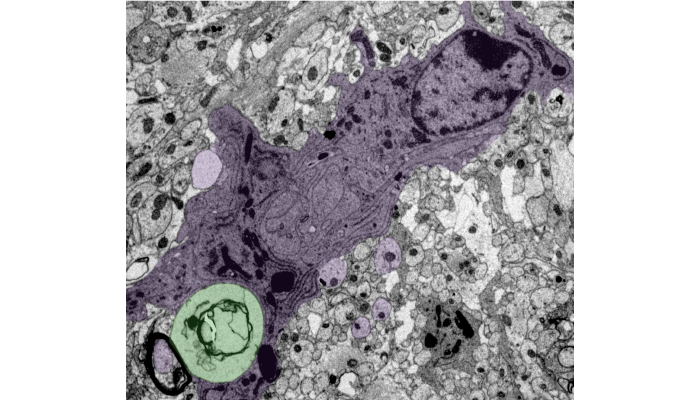Neural stem cells restore myelin in a demyelinating model of PMD
Published: 28 May 2020
Research conducted by iii scientists could have positive implications for sufferers of fatal leukodystrophies such as Pelizaeus-Merzbacher Disease (PMD).

Research conducted by iii scientists could have positive implications for sufferers of fatal leukodystrophies such as Pelizaeus-Merzbacher Disease (PMD).
There is currently no cure for the group of genetic disorders termed the leukodystrophies, which affect myelin formation or maintenance.
The brain's myelin sheath acts like an insulating material to ensure signals pass quickly and efficiently between nerves cells, and any negative affect on myelin formation can have devastating consequences for the individuals affected.
However, according to the paper, direct neural stem cell transplantation in an animal model of PMD restores normal myelin in the face of competition from myelin-competent mutant oligodendrocytes.
The Edgar lab has characterised the clinical, histological and biochemical changes in two brothers with PMD and demonstrated proof-of-principle for cell replacement as a viable therapy in the equivalent animal model.
The brother of the patients said: "You have my blessing for any work that might help those that are inflicted with this terrible disease.
"Very few would understand just how horrible this is until they witness the slow progress year after year, as I did with my brothers."
Neural stem cells restore myelin in a demyelinating model of Pelizaeus-Merzbacher disease
- Fredrik I Gruenenfelder, Mark McLaughlin, Ian R Griffiths, James Garbern, Gemma Thomson, Peter Kuzman, Jennifer A Barrie, Maj-lis McCulloch, Jacques Penderis, Ruth Stassart, Klaus-Armin Nave, Julia M Edgar
This study was supported by funding from the School of Veterinary Medicine, University of Glasgow (J.E. and J.P.); UK Multiple Sclerosis Society (Ref 38; J.E.); Action Research (IRG); The Wellcome Trust (WT077089; I.R.G. and M.M.); The Nemours Foundation, The Children’s Research Center of Michigan and The National Multiple Sclerosis Society (RG 3204A1; J.G.); research in the Nave lab is supported by the DFG (TRR 274), ERC (MyeliNANO), and the Adelson Medical Research Foundation (AMRF) (K.A.N.)
First published: 28 May 2020

